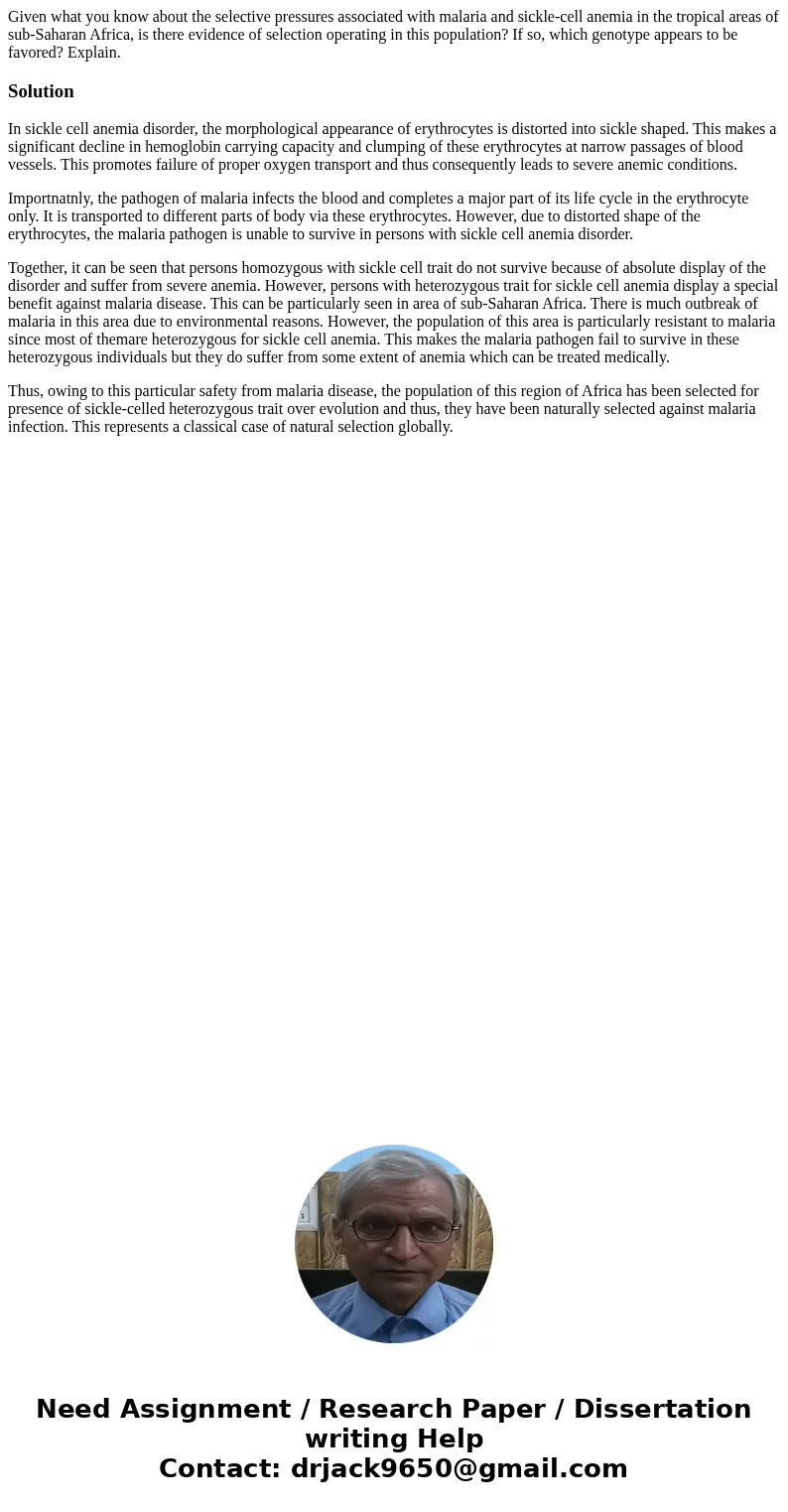Given what you know about the selective pressures associated
Given what you know about the selective pressures associated with malaria and sickle-cell anemia in the tropical areas of sub-Saharan Africa, is there evidence of selection operating in this population? If so, which genotype appears to be favored? Explain.
Solution
In sickle cell anemia disorder, the morphological appearance of erythrocytes is distorted into sickle shaped. This makes a significant decline in hemoglobin carrying capacity and clumping of these erythrocytes at narrow passages of blood vessels. This promotes failure of proper oxygen transport and thus consequently leads to severe anemic conditions.
Importnatnly, the pathogen of malaria infects the blood and completes a major part of its life cycle in the erythrocyte only. It is transported to different parts of body via these erythrocytes. However, due to distorted shape of the erythrocytes, the malaria pathogen is unable to survive in persons with sickle cell anemia disorder.
Together, it can be seen that persons homozygous with sickle cell trait do not survive because of absolute display of the disorder and suffer from severe anemia. However, persons with heterozygous trait for sickle cell anemia display a special benefit against malaria disease. This can be particularly seen in area of sub-Saharan Africa. There is much outbreak of malaria in this area due to environmental reasons. However, the population of this area is particularly resistant to malaria since most of themare heterozygous for sickle cell anemia. This makes the malaria pathogen fail to survive in these heterozygous individuals but they do suffer from some extent of anemia which can be treated medically.
Thus, owing to this particular safety from malaria disease, the population of this region of Africa has been selected for presence of sickle-celled heterozygous trait over evolution and thus, they have been naturally selected against malaria infection. This represents a classical case of natural selection globally.

 Homework Sourse
Homework Sourse